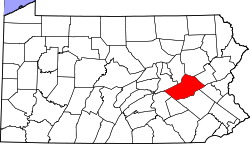Reevesdale | |
|---|---|
| Coordinates: 40°46′54″N76°00′43″W / 40.78167°N 76.01194°W | |
| Country | United States |
| State | Pennsylvania |
| County | Schuylkill |
| Elevation | 971 ft (296 m) |
| Time zone | UTC-5 (Eastern (EST)) |
| • Summer (DST) | UTC-4 (EDT) |
| Area code | 570 |
| GNIS feature ID | 1204481 [1] |
Reevesdale is an unincorporated community and coal town in Schuylkill County, Pennsylvania, United States, 2.6 miles south of Tamaqua.


